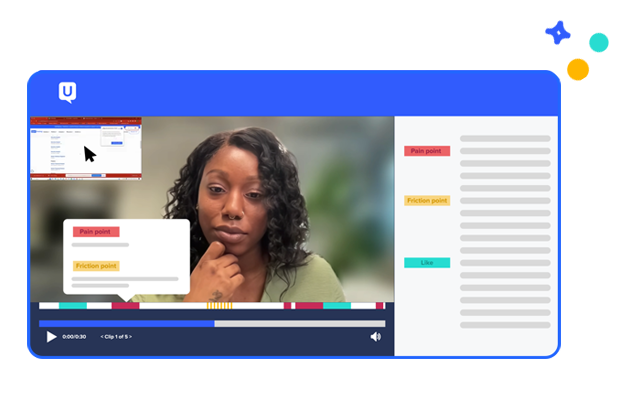
How to achieve product-market fit

According to CISQ, $2.26 trillion is spent on software re-work in the US So why do some digital products succeed where others fail? One reason is that products and features are rolled out without testing product-market fit.
One way to achieve product-market fit before you design anything is to test early and often with the right audience. In this article, we'll show you how to test for product-market fit to build better and faster.
What is product-market fit?
Product-market fit is a scenario where an organization's target customer is buying, using, and becoming champions for a product in numbers large enough to sustain that product's growth and profitability. It helps organizations limit risk, validate ideas, and build better products.
The term product-market fit is attributed to Benchmark Capital co-founder Andy Racheliff who was influenced by the thinking of fellow entrepreneur Don Valentine. However, the idea was popularized in the 2000s by Marc Andreessen, who describes product market fit as a scenario in which an organization’s target customer is buying, using, and becoming champions for an organization’s product in numbers large enough to sustain that product’s growth and profitability.
Author and product manager Dan Olsen communicates the concept with a pyramid diagram.
The bottom two layers refer to the market in which target customers and their underserved needs make up the foundation. The top three layers of the pyramid refer to the product, with its value proposition, feature set, and user experience.
When the underserved needs of the target customer connect perfectly with the product's value proposition, feature set, and user experience, the product market fit is complete.
Why is product-market fit important?
As a society, we praise organizations, inventors, and creatives for their ability to predict what will be successful. People like Steve Jobs had a sixth sense for the next big thing. Yet, for every successful innovation or new product, thousands of failed ideas fall by the wayside.
While there will always be elements of luck and fortunate timing, product-market fit doesn’t happen by chance. It’s a dance of art and science. As an organization’s research methods improve and become part of its everyday processes, so does its ability to see through the fog of uncertainty and create products that are likely to succeed.
But, no matter what changes the future has in store, one thing will never change: Product market fit will always come from a fundamental need to connect with real people.
Let’s start with the basics.
- Organizations can fail due to developing products that solve non-existent problems or are prematurely introduced to the market.
- Ensuring product-market fit is crucial from the earliest stages of design and development.
- Without proper market alignment, companies risk investing in products that are ultimately not needed.
“You can’t grow a product that hasn’t reached product-market fit.” -Arjun Sethi, Senior Director of Product Management, Growth, and Emerging Products at Yahoo
How to achieve product-market fit
If you want to build a product with value, you must first understand who’ll be using that product and why. Ideas are nice to have. But in business, it’s never officially a good idea until the market has validated it. Developing a valuable product or service takes up resources, which is why exploratory research is vital. Growth experiments can help, through the establishment of a systematic and repeatable experimentation process. Before committing to development, companies need confidence they’re solving a problem that genuinely needs a solution.
Related reading: Generative vs. evaluation research
Conduct exploratory research
When exploratory research processes aren’t thorough enough, and insights aren’t clear, companies end up spending millions of dollars building products that are merely “nice to have.” These products take up more resources to explain and sell because users will have to be educated about their need for the product before they’re even ready to consider using or buying.
One of the most foundational exercises at the beginning of discovery or exploratory research phases is phrasing the problem you’re trying to solve from your customer’s perspective. Examples of problems you might hear from customers would be:
- It takes too long to sort through my email.
- It’s too hard to understand all of these legal forms.
- I need to review these complex spreadsheets before noon, but I only have my phone on me.
If the problem can be stated in short, simple terms without referencing your product idea, then you might have a hypothesis worth validating.
The next step is to tie your idea to a real human experience. You want to pinpoint actual people experiencing the problem you want to solve. Search for these people by creating a customer persona based on hypotheses. Ask yourself questions to unearth new ideas. Are they a certain age? Do they work in a certain industry? Do they have a specific skill set or interest?
As you find actual people experiencing the problem, use what you learn from them to complete your customer personas with tangible human insight.
Check out test templates for the discovery phase:
- Needs and frustrations discovery
- Persona characteristics
- Feature prioritization
- Diverse and inclusive perspectives
See how Notre Dame’s IDEA Center measures product-market fit by product testing with niche audiences.
If all of this sounds complicated, don't panic. Achieving product-market fit is often just a case of running a standardised validation process. It's likely you're already doing most of these things, but it's worth restating them all so you can make sure there aren't any gaps in your process. Let's go over the key steps one more time.
Achieving product-market fit checklist
- Get to know your core customers: First things first, you need to understand who your target customers really are. Map out those buyer personas based on how the market is divided up, focusing on the folks most likely to see value in what you're offering.
- Discover needs no one else is meeting: Do some digging to pinpoint the exact problems your target customers are facing that no one has properly solved yet. Make sure these needs are legitimately going unmet by what's currently out there.
- Spell out your value proposition: Once you've got that locked down, clearly state how your product will knock those unmet needs out of the park better than any alternative. Highlight the unique advantages and benefits that set your product apart.
- Build your minimum viable product (MVP): With your value proposition as a guide, put together an MVP with just the core features needed to wow those early adopters and validate your product concept.
- Prototype for feedback: Develop a prototype or beta version of the MVP that's fleshed out enough to get some useful feedback from potential users, without over-investing in full development.
- Get customer validation: Put that MVP out there and test it with real users from your target crowd. Their feedback will help you tune the MVP until it's perfectly aligned with what they need.
- Watch the key metrics: Keep tabs on numbers like churn, user retention, growth rate, market share, and Net Promoter Score—along with any qualitative feedback. These metrics will show you how close you are to nailing product-market fit.
- Get the whole team involved: Make this a team effort with people from product, marketing, sales, customer support, and beyond, all collaborating to shape the perfect product.
- Be ready to adapt: Bake in a feedback loop so you can continually enhance the product. Update features and strategies to match the latest user insights and market shifts.
- Never stop fine-tuning: Know that product-market fit isn't a finite finish line; it's an endless journey. Always evolve your product to keep up with changing customer needs and landscapes.
The key is being scrappy and responsive. It's an iterative process of building something, getting feedback, and fine-tuning until you've created a product that meshes perfectly with what the market wants—both now and as it changes over time.
3 things to learn about your users to ensure product-market fit
Once you’ve found your target customer, you want first to look at how they’re currently solving the problem. This is where user research in product development comes to the fore.
1. How are people attempting to solve the problem?
In your market research, ask your audience to complete the problematic task(s) as they naturally would. Observe how they approach the problem, listen to how they describe their process, and notice what tools they use to get it done.
- Do they have a favorite website or app that helps them do what they need to do?
- Do they need to use physical items to complete their objective?
- Do they spend a lot of time doing boring or repetitive actions?
This question helps you determine whether the problem is a problem, and it’ll help you determine whether your solution is viable. If people are hacking together their solution or wasting time repeating the same tasks repeatedly, then it’s clear that the problem is real.
Remember, people are creatures of habit. If their current process is good enough, they’ll be less likely to adopt an unfamiliar, new product or technology. If their current process is difficult or frustrating, and you help them realize how frustrating it is, they’ll be much more open to your solution.
This crucial first step ensures that every stone is turned over in the research process. Seeing users go through their current solution can often spawn new ideas, features, or answers to the problem. In addition, it may challenge your product team’s assumptions, which is always welcome.
Related reading: Working backwards to solve customer problems
2. What frustrates them about their current process?
Sometimes, users’ explanations of a problem differ from what their behaviors suggest. It’s always helpful to hear users describe, in their own words, what they like and dislike about an experience. Note anything they complain about, including the time it takes, the number of options they have, and any roadblocks or unwieldy interface elements they come across.
As users describe the problem, don’t hesitate to ask them why it’s frustrating. However, always do your best to avoid asking leading questions to users that might skew their answers toward false verification of your hypothesis. Instead, keep questions fair and let people describe the issue in their way.
A simple but compelling question might be: “If you had a magic wand, how would you improve or change this product or experience?” Ask whether they could complete their task and how easy or difficult it was. Watch for any places where they sigh, groan, or hesitate.
Oftentimes contributors won’t immediately identify what’s frustrating them—they’ll know that they’re having a hard time. So it’s up to you to pay attention and figure out what’s causing the negative experience and how to improve upon it in a way that would be valuable to them.
Once you pinpoint your target customer’s frustration, you’ll more easily be able to prioritize what you need to focus on to alleviate it. Your users will probably have complaints you haven’t even thought of.
3. What other activities go hand-in-hand with this problem?
Once your participants have completed the experience in question, you might ask them: “What would you do next?”
For example, if the users have been trying to find a cross-country flight, their next steps might include booking a rental car, making a hotel reservation, or adding travel dates to their calendars. In addition, you cover that your users like to forward their travel information to their family immediately after booking the ticket or set up their out-of-office memo on their email right away before they forget.
Ultimately, this type of questioning helps you uncover opportunities to save your users time by either helping them complete multiple activities at once or leading them intuitively onto the following action. Often, these thoughtful touches can make a product stick out in a user’s mind after they’ve completed the experience.
Of course, your product doesn’t need to do everything, but collecting this information will help you understand your target customer’s mindset and the path they take to solve their problem. That extra consideration is how you design products and experiences with customer empathy.
How to measure product-market fit
Gauging product-market fit requires both a microscopic and telescopic view of how a product is received in its intended market. It’s a balance of empathetic customer understanding and data-driven insights, cultivated through various methods and tools. Here’s a detailed rundown of the essential indicators and the broader context behind each.
1. Customer Intimacy and Understanding:
The foundation of measuring product-market fit starts with how well you know your customers and their needs. Regular, deep conversations through interviews or establishing a Customer Advisory Board can offer profound insights into customer satisfaction and product relevance. This qualitative approach underpins every metric, giving life and narrative to the numbers you'll track. Understanding customer sentiment, including their praises and grievances, shapes an authentic picture of product-market fit.
2. Pirate Metrics (AARRR):
Dave McClure's Pirate Metrics framework breaks down the customer lifecycle into Acquisition, Activation, Retention, Referral, and Revenue.

It’s not just about having users but about having active, paying users who love the product enough to refer it to others. In particular, a high Retention rate suggests that users continue to find value in your product, signifying a strong product-market fit. The Pirate Metrics give a comprehensive view of user interaction with your product, from first contact to loyal advocacy.
3. User Engagement:
The heart of product-market fit lies in user engagement. A product that users frequently engage with is likely meeting a significant need. But engagement must be meaningful—PostHog, for instance, defines 'Discoveries' as substantial engagement because it implies users are deriving value, as opposed to mere logins or superficial activity. The increase in genuine engagement over time, especially relative to new user signups, indicates a product's stickiness and market traction.
4. Paying Ideal Customer Profile (ICP) Customers:
Revenue alone can be deceptive when assessing product-market fit; it's crucial to know whether paying customers fall within your ICP. These are the customers you designed the product for, and their growth signifies that you’re not only attracting the right customers but also that the product is resonating with them. A rising number of paying ICP customers indicates repeatability and scalability in your market efforts, reflecting a strong product-market fit.
5. Retention Curve:
The Retention curve is a powerful lagging indicator, often revealing the long-term viability of a product. If a significant portion of your users stick around and the curve flattens, this indicates that your product continues to deliver value over time. Watching how different cohorts engage and remain with your product over weeks and months can provide a nuanced understanding of fit across various market segments.
6. Burn Multiple:
Especially pertinent for startups looking at growth efficiency, the Burn Multiple indicates how much you're spending to grow revenue. A lower burn multiple suggests that you’re achieving growth more efficiently, implying a product-market fit that's potentially more sustainable. This metric becomes crucial when presenting your company to investors who are looking for signs that the market is organically pulling your product, rather than it being pushed onto the market.
These indicators, while powerful, only paint a complete picture when they are understood within the broader context of the market and user behavior. They must be accompanied by an agile mindset, ready to iterate on the product based on these feedback loops.
Remember, achieving product-market fit is not a static victory. It's a dynamic process, requiring continuous tuning and attentiveness to shifts in customer needs and market dynamics. It’s an interplay between the emotional resonance of a product and the hard numbers that indicate its performance in the market.
How product-market fit manages risk
Doing your research upfront will save you from designing products that no one needs and will keep your team focused on projects that can move the needle. You’ll find opportunities for your product to solve problems—often in ways you hadn’t originally imagined. By focusing on product-market fit, companies can mitigate risk, remove guesswork, and avoid common mistakes when forced to return to the drawing board.
Prioritizing product-market fit allows a company to create products that genuinely solve customer problems while ensuring resources are invested wisely, avoiding the pitfall of building something nobody actually wants or needs.
But it all starts with some good old-fashioned exploratory research. This is where companies can get up close and personal with their customers' painpoints from a real human perspective. By capturing these issues in plain language, product teams can form hypotheses directly linked to the user experience, making sure they're tackling genuine needs, not imagined ones.
From there, it's all about building an initial bare-bones version - whether you call it a Minimum Viable Product or a Minimum Lovable Product. This tangible first draft of your product hypothesis lets you start validating if you're headed in the right direction through continuous feedback and iteration. An approach that inherently reduces risk by preventing you from going all-in on features or whole products that just don't click with your market.
Plus, focusing on product-market fit guides you in prioritizing the features that truly matter. You can zero in on those make-or-break "experience blocker" features that are essential for a decent user experience. And by setting up analytics to track core user actions, you get solid data insights into how people are actually using your product to make smart, de-risked decisions.
Quantitative metrics also play a huge role in managing risk. Your customer acquisition costs need to be lower than a customer's lifetime value to ensure profitability and sustainable growth. You can't be hemorrhaging money trying to attract users to an ill-fitting product.
But the quest for product-market fit is never really over. Even when you nail it, you have to keep actively evolving your product alongside shifting customer needs and market expectations. Products that stagnate end up losing that hard-won fit and become obsolete relics.
By baking these product-market fit principles into the entire development process, organizations can drastically reduce the risk of dumping resources into products utterly misaligned with market demands or customer expectations (and luckily, there's a human insights platform to help you pinpoint those). It's a strategic, ongoing effort that demands deep customer understanding, a keen eye for detail, and the willingness to constantly adapt as the world keeps turning.
If your product can solve a real need and do it easier, faster, cheaper, or better than the alternatives, you’re on track for product market fit.

Get actionable insights today
Uncover human insights that make an impact. Book a meeting with our Sales team today to learn more.





